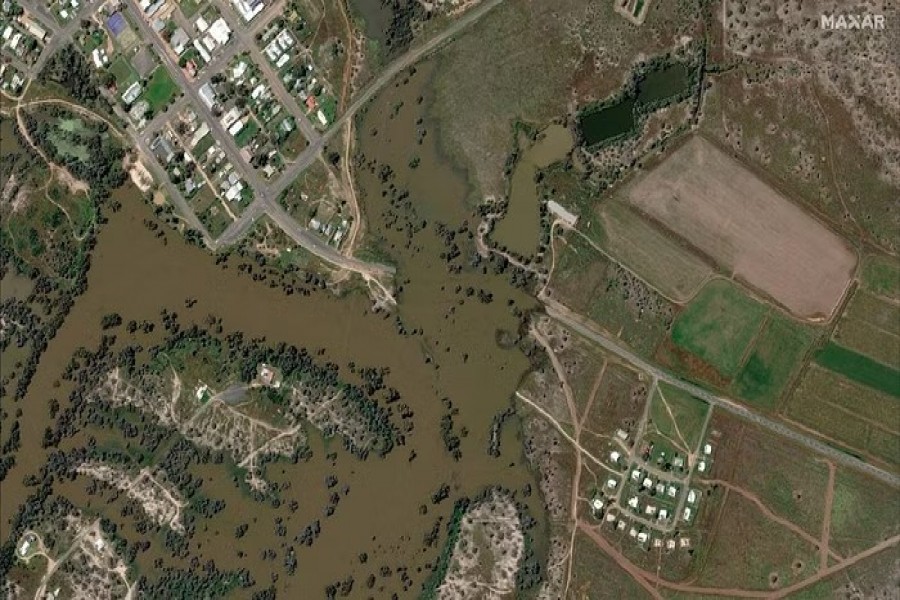Residents in flood-hit Australian towns ramped up efforts to build levees and sandbag homes on Wednesday ahead of more rain, although authorities said the expected storms could be milder than last week's, bringing relief as recovery operations begin, Reuters reports.
Forecast rainfall across Victoria state is unlikely to trigger more major flooding, although parts of Australia's east are likely to receive up to 100 mm (4 inches) of rain over the next five days, roughly a tenth of a year's total for some areas, the Bureau of Meteorology said.
"The expected rainfall over coming days is not expected to be anywhere near as widespread or as intense or as heavy, and as a result of that we're not expecting a return to major flooding," said Kevin Parkins, a meteorologist at the Bureau.
Flood waters are still rising around several inland towns in Australia's two most populous states of New South Wales and Victoria, with officials urging residents to evacuate before they are cut off.
Police said a 65-year-old man was found dead in floodwaters in Victoria's north on Wednesday, taking the death toll to two.
Residents in some areas, including the Victorian rural town of Echuca, are facing their second flooding in a week.
A dirt levee has been built in Echuca, about 250 km (155.3 miles) north of Melbourne, amid warnings the Murray, Australia's largest river, could breach a near 30-year high later this week.
In the nearby town of Moama, across the state border in southern New South Wales, defence force personnel teamed up with residents to sand-bag homes.
'VERY, VERY LONG EVENT'
An intense weather system last week brought almost a month's rain in two days across much of Victoria, southern New South Wales and northern parts of Tasmania, triggering flash flooding.
Forecasters say any reprieve is likely to be temporary with a long wet summer ahead as Australia endures a rare third consecutive La Nina weather event, typically associated with higher rainfall.
"This is a very, very long event ... these floods will continue for a number of months," New South Wales deputy state emergency services commissioner Ken Murphy told ABC television.
Australia has been enduring extreme weather events that some experts say are happening because of climate change. Droughts and devastating bushfires scorched the country at the end of last decade, while frequent floods have been wreaking havoc since early 2021.
Amid fears of renewed flooding, Grain Producers Australia said this year's harvest was "on a knife's edge", echoing warnings from the government about the economic costs of flooding.


